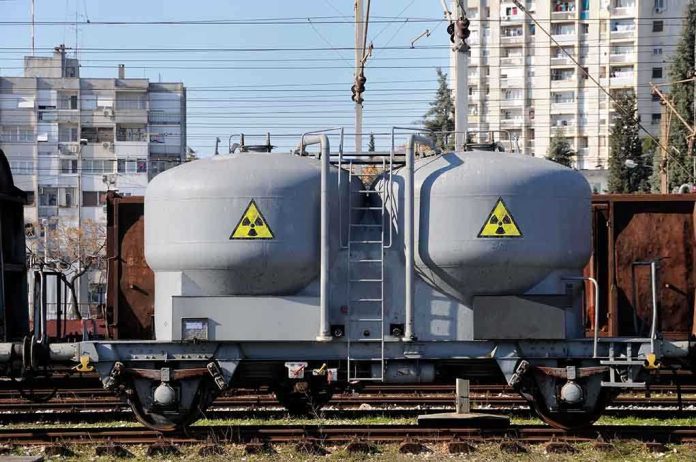
A new policy threatens to reshape America’s nuclear landscape by granting private companies access to weapons-grade plutonium, raising both opportunities and concerns in the energy sector.
Story Highlights
- Private nuclear firms gain access to weapons-grade plutonium for advanced reactors.
- Initiative aims to boost national security and energy innovation.
- Concerns about proliferation and safety remain amidst the benefits.
- Deployment of first military base reactor slated for 2028.
US Initiative Revolutionizes Nuclear Energy Sector
The United States, under President Trump, has unveiled a groundbreaking policy granting private nuclear energy companies access to weapons-grade plutonium. This controversial move aims to accelerate the development of advanced nuclear reactors, enhancing national security and fostering innovation in critical infrastructure. The Department of Energy (DOE) has been tasked with identifying and releasing plutonium and uranium within 90 days, a decision that could redefine the nuclear energy landscape.
Historically, the US has restricted civilian access to such materials due to proliferation risks. However, with recent technological advancements, there is a growing demand for secure, reliable energy, particularly for artificial intelligence (AI) and defense applications. This initiative is part of a broader strategy to modernize energy infrastructure and maintain US leadership in nuclear technology, countering the international competition from countries like Russia and China.
Stakeholders and Strategic Interests
The primary stakeholders include the DOE, the Department of Defense (DoD), private nuclear companies, and national laboratories. The DOE oversees the identification and release of nuclear materials, while the DoD plans to deploy reactors at military installations. Private companies are eager to develop and commercialize advanced reactors, hoping to reduce fuel costs and enhance energy security. National labs will serve as hubs for reactor deployment and fuel processing, advancing research and technological deployment.
Despite the potential benefits, the initiative raises concerns about nuclear proliferation and the need for stringent safeguards. Critics argue that releasing weapons-grade plutonium, even under strict regulations, could pose significant risks if not managed properly. The White House and DOE emphasize the importance of robust regulatory oversight to mitigate these concerns, ensuring that the initiative fortifies rather than jeopardizes national security.
Potential Impacts and Future Outlook
In the short term, the policy is expected to accelerate the deployment of advanced reactors at military and critical infrastructure sites, boosting investment in nuclear technology. This could enhance energy security for defense and AI operations, creating jobs in the nuclear sector. In the long term, the initiative aims to reduce nuclear waste stockpiles through recycling and strengthen the US position in global nuclear technology markets. However, the potential for proliferation remains a significant concern, requiring ongoing vigilance and regulatory oversight.
As the US navigates this complex landscape, the success of this initiative will depend on balancing innovation with safety. The DOE’s efforts to recycle nuclear waste and reduce reliance on foreign fuel sources are crucial steps in this direction. This policy underscores the nation’s commitment to maintaining technological leadership while addressing the challenges of modern energy needs.
Sources:
White House Presidential Order on Advanced Nuclear Reactor Technologies
MarketScreener Report on Nuclear Energy Access



